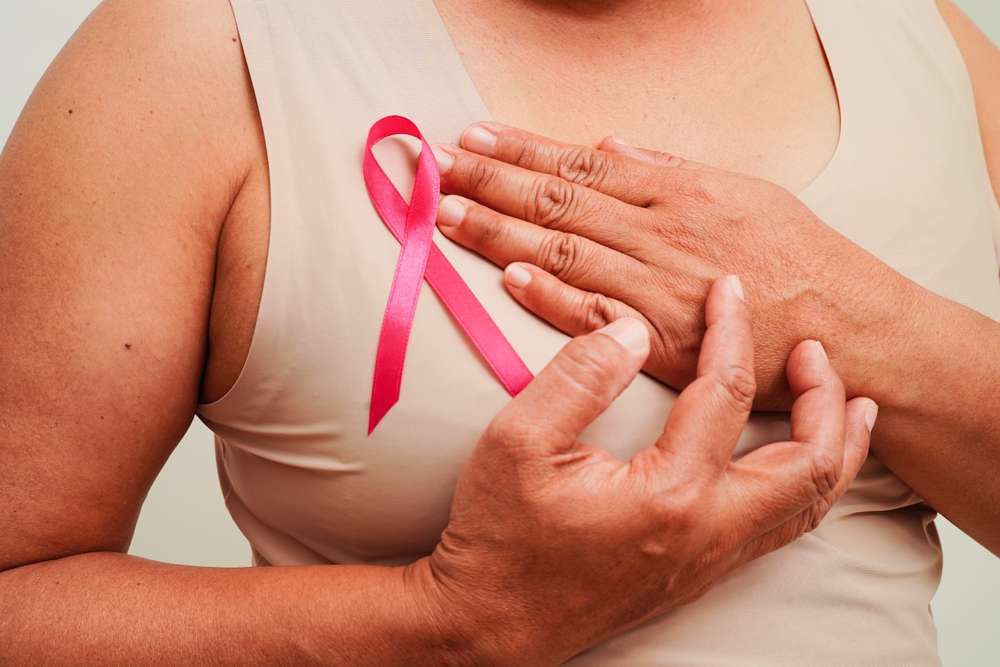Why wait? Latest guidelines recommend that breast cancer screenings should start at 40 for average-risk women.
The US Preventive Services Task Force (USPSTF) recently updated its breast cancer screening guidelines to recommend women at average risk to start screenings at age 40, following the long-standing practice in Asia. This change is expected to save more lives. It also highlights the importance of early detection for women across the globe.
US Follows Asia’s Lead in Early Detection
In Asia, women have long been advised to begin regular mammograms at age 40. Breast cancer is the most common cancer among Asian women, with incidence rates increasing in recent years.
According to the World Health Organization, breast cancer rates in Asia have steadily risen in the past decade, with more than 1.7 million cases diagnosed in 2020. The updated USPSTF guidelines now align with this practice, emphasising the significance of early screening for Asian women.
Asia accounted for nearly half (45.4%) of the 2.3 million breast cancer diagnoses made worldwide in 2020.
In the US, the latest breast cancer screening guidelines recommend biennial mammography screening for average-risk women starting at age 50, with the option to start at age 40, while women with increased risk factors, such as family history or race, may require earlier or more frequent screening.
Additionally, a study in the journal JAMA Network Open found that Black women are 40% more likely to die from breast cancer and suggested that they should start screening for breast cancer at younger ages, around 42 instead of 50.
Unique Patterns of Breast Cancer in Asia
According to Dr. Steven Tucker, an Oncologist based in Singapore, “Breast cancer tends to occur at a younger age in Asian women compared to Caucasian women. Breast cancer in Asia peaks in the 40s, compared to the 60s in the West. Early onset breast cancer often means a more aggressive form of the disease.”
More aggressive tumour biology is observed in breast cancers among Asian women. These tumours tend to be higher grade, with higher rates of lymph node involvement and HER2 positivity. They also tend to have higher cellularity and higher mitotic rates. These factors contribute to poorer long-term outcomes, Dr Tucker explains.
Lower Survival Rates and Access to Care
He shares further, “Asian women face lower survival rates in breast cancer compared to Western nations, primarily due to advanced-stage at diagnosis, as well as limitations in treatment and access to care”.
Prevalence of Mutations
Asian populations exhibit a higher prevalence of BRCA mutations, particularly in the BRCA2 gene. These mutations contribute to the higher rates of early-onset breast cancer in Asia. Dr Tucker suggests, “Mutations in the BRCA breast cancer susceptibility genes, especially BRCA2, appear to be more common in some Asian populations. This contributes to the higher rates of early-onset breast cancer in Asia. Proactive genetic testing may help identify high-risk individuals.”
Increased Proportion of Triple-Negative Breast Cancers
Furthermore, a higher proportion of triple-negative breast cancers, which are negative for estrogen receptor (ER), progesterone receptor (PR), and human epidermal growth factor receptor 2 (HER2), are observed in Asian women compared to Caucasian women. These tumours tend to be more aggressive and difficult to treat.
Dr Tucker highlights, “Breast cancers that are negative for ER, PR, and HER2 (triple negative) make up a larger percentage of breast cancers in Asian women compared to Caucasian women. These tumours tend to be more aggressive and difficult to treat.”
Benefits of Early Screening for Asian Women
Starting breast cancer screening at age 40 has significant benefits for Asian women. Early detection can lead to better treatment outcomes and a reduced risk of death from the disease.
The five-year survival rate for breast cancer patients in Asia who were diagnosed through screening was 85%. In comparison, this was 74% for those diagnosed without screening. This further highlights the critical role of regular mammograms in detecting and treating breast cancer in its early stages.
Addressing Barriers to Screening in Asia
Despite the known benefits of early screening, various factors such as limited healthcare access, cultural beliefs, and financial constraints deter many Asian women from regular mammograms. Dr Tucker underscored the urgency for more tailored strategies, stating, “There is an obvious need for more customised screening and prevention in Asian women.”
Given that breast cancer develops earlier in Asian women, he points out that “standard screening guidelines designed for Western women might miss cancers in younger Asian women.” Earlier or more frequent screening may catch more treatable cases.
He also emphasises the lower breast cancer awareness in Asian nations compared to the West, leading to infrequent screenings. He proposes “culturally-sensitive education campaigns” to enhance knowledge about risks and options.
Dr Tucker notes the higher prevalence of certain gene mutations like BRCA2 in some Asian ethnicities, contributing to increased breast cancer rates. He suggested that “targeted genetic testing, screening, and prevention based on population-specific gene signatures could improve survival rates. We have the technology to identify personal risk profiles and tailor screening programs,” but he stresses the need to reduce costs and improve awareness and accessibility to these services.
Risk Factors and Prevention Strategies for Asian Women
In addition to regular screening, understanding and addressing the risk factors for breast cancer may further reduce their risk of developing the disease.
The following factors have been linked to an increased risk of breast cancer:
- Obesity
- Physical inactivity
- Alcohol consumption
- Exposure to certain environmental pollutants
By adopting a healthy lifestyle, Asian women can take proactive steps to lower their risk of breast cancer.
Taking Charge of Asian Women’s Health
The updated USPSTF breast cancer screening guidelines serve as a reminder for Asian women to prioritise their health.
Remember, early detection increases the chances of successful treatment and survival.














